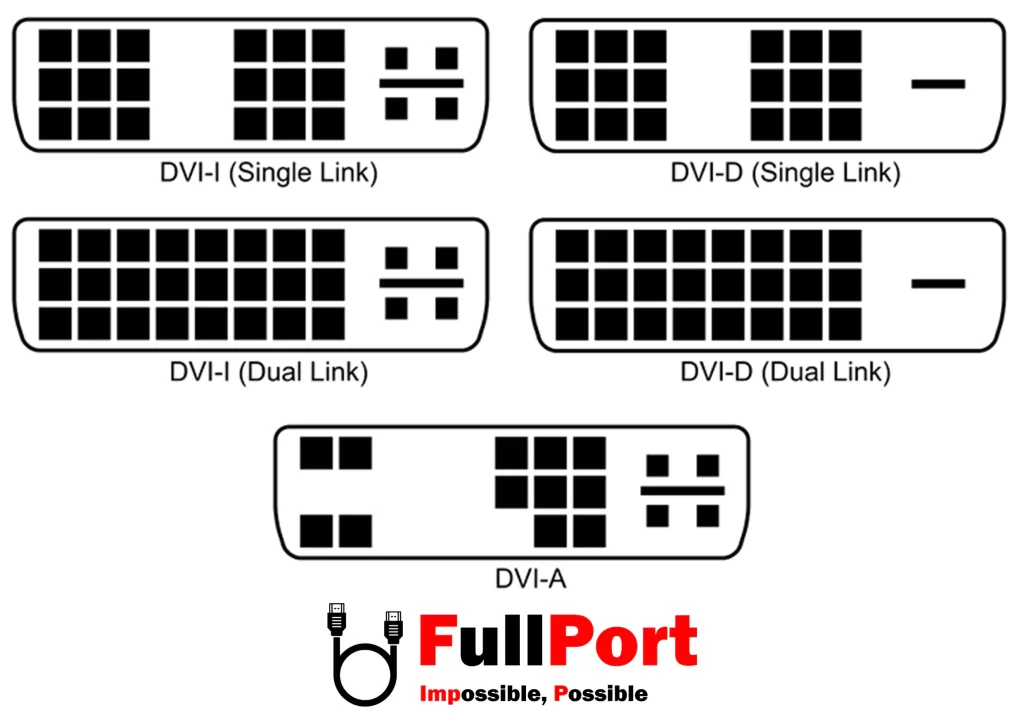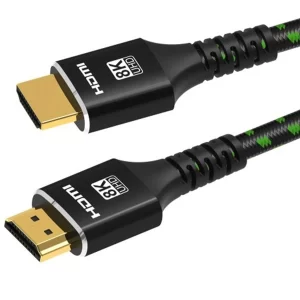DVI چیست؟؟

پورت DVI
کلمه ی DVI که مخفف عبارت Digital Visual Interface به معنی رابط تصویری دیجیتال ، یک فرمت اتصال نمایش می باشد که در حدود سال 1999 به اوج محبوبیت خود رسید.
این درگاه برای انتقال تصاویر بدون صدا استفاده می شود.
برای مثال می توان در انتقال تصاویر از یک گرافیک بر روی یک مانیتور استفاده کرد.
DVI سیگنال های آنالوگ را به سیگنال های دیجیتال تبدیل می کند.
همچنین می تواند به عنوان یک درگاه برای تک سیگنالهای آنالوگ نیز مورد استفاده قرار گیرد.
یکی از محبوب ترین پورت های تصویر که در اکثر کارت گرافیک های نظیر Nvidia و AMD به کار رفته است و محبوب ترین آن نیز پورت DVI-I Dual Link و DVI-D Dual Link می باشد.

اطلاعات بیشتر با توجه به فنی بودن پورت به زبان انگلیسی عرض میکنم:
DVI-D (Digital Only Signal)
DVI-D: This is the most common style. Almost all DVI-capable devices on the market use a DVI-D interface.
DVI-A (Analog Only Signal)
DVI-A: In a digital-only world, “DVI Analog” would make no sense. However, as with all new technologies, there needs to be way to connect to older equipment. DVI-A uses a DVI style connector on a cable that sends an analog-only signal, which can be understood by analog VGA monitors.
DVI-I (Integrated Analog & Digital)
DVI-I: In practice, DVI Analog-only cables are rare, and DVI Analog devices are non-existent. The DVI Integrated cables and connectors offer the best of both worlds: a single cable and connector that can transmit both a digital and an analog signal. Since a DVI-I connector offers the most flexibility, video cards such as the ATI Radeon 8500 use this connector so that either a DVI digital screen or VGA monitor can be connected.
Important: In DVI like anything else, an Analog signal will only talk to analog devices, and a Digital signal will only talk to digital devices. Trying to convert a DFP or DVI-D (Digital Only) signal to a VGA (Analog) signal will not work.
Single Link vs. Dual Link:
As if three flavors of DVI are not confusing enough, it turns out that DVI-D and DVI-I also come in either Single Link or Dual Link. The basic difference is that dual link can support higher resolutions. Single link cables can be identified as having 8 pins missing, while dual link cables use all 24 pins.
Single Link: Can support resolutions up to 1920 x 1080 at 60 Hz. Each link has three data channels for RGB information with a maximum bandwidth of 165 MHz, which is equal to 165 million pixels a second. Uses 12 of 24 pins. This is more than adequate for most plasma TVs. A typical DVI digital single link cable can be seen here: DVI digital single link cable
Dual Link: Can support resolutions up to 2048 x 1536 at 60 Hz. Each link has three data channels for RGB information with a maximum bandwidth of 165 MHz, which is equal to 165 million pixels a second. Uses all 24 pins. Here is a picture of a DVI digital dual link cable: DVI digital dual link cable
While most DVI digital devices have connectors that can accept dual link cables, there are a few plasma TVs that can only accept a single link cable. Therefore, it’s always good to check with your device retailer about the appropriate cable to choose.
Cable Length: The maximum length of a typical DVI Digital cable made out of copper wires is approximately 5 meters. Longer DVI cables, made out of fiber optic cables, are available for lengths up to 100 meters, although they tend to be very expensive.
We hope you enjoyed this tour through the world of DVI cables. Tune in next month for “USB Uncovered” where we sort out the various problems encountered in dealing with USB devices.




اولین دیدگاه را ثبت کنید